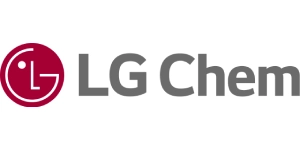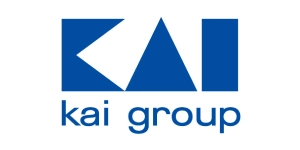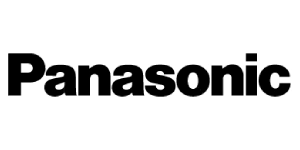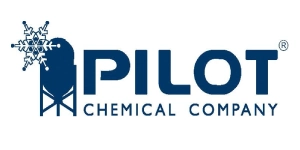Global Aircraft Environmental Control Systems Market to Reach USD 5,429.68 Million by 2032 | CAGR of 4.4%
Category : Aerospace and Defence | Published Date : Jan 2025 | Type : Press Release
Aircraft Environmental Control Systems Market Scope & Overview:
In the newly published report, Consegic Business Intelligence states that the Aircraft Environmental Control Systems Market was valued at USD 3,928.98 million in 2024 and is projected to grow at a CAGR of 4.4%, reaching USD 5,429.68 million by 2032. Aircraft Environmental Control Systems (ECS) are critical for maintaining optimal cabin conditions, including temperature, humidity, and air pressure, ensuring passenger comfort and crew safety. These systems enhance the operational efficiency of both commercial and military aircraft while reducing environmental impacts through advanced technologies.
The report comprises the Aircraft Environmental Control Systems Market Share, Size & Industry Analysis, based on System Type (Air Supply & Management System, Thermal Management & Control System, Cabin Pressure & Control System, Others), Component (Heat Exchanger, Evaporator, Water Separator, Compressor, Others), Aircraft Type (Fixed Wing, Rotary Wing), End-Use (Commercial, Military & Defense, Others), and Region (North America, Europe, Asia-Pacific, Middle East & Africa, Latin America), and Forecast, 2025-2032.
The report contains detailed information on Aircraft Environmental Control Systems Market Trends, Opportunities, Value, Growth Rate, Segmentation, Geographical Coverage, Company Profiles, In-depth Expert Analysis, Revenue Forecast, Competitive Landscape, Growth Factors, Restraints or Challenges, Environment & Regulatory Landscape, PESTLE Analysis, PORTER Analysis, Key Technology Landscape, Value Chain Analysis, and Cost Analysis.
Segmental Analysis :
Based on system type, the market is segmented into Air Supply & Management System, Thermal Management & Control System, Cabin Pressure & Control System, and Others.
- The air supply & management system segment held the largest market share of 34.79% in 2024, attributed to its ability to regulate air quality, humidity levels, and cabin pressure effectively.
- The cabin pressure & control system segment is projected to grow at the fastest rate, driven by advancements in pressure control systems ensuring enhanced passenger safety and comfort.
Based on components, the market is segmented into Heat Exchanger, Evaporator, Water Separator, Compressor, and Others.
- The heat exchanger segment accounted for the largest revenue in 2024, driven by its role in temperature regulation and improved efficiency in cabin cooling systems.
- The compressor segment is expected to register significant growth, supported by technological advancements in high-performance compressors for both commercial and military applications.
Based on aircraft type, the market is segmented into Fixed Wing and Rotary Wing.
- The fixed-wing segment dominated the market in 2024, due to higher speed capabilities, longer flight ranges, and greater payload capacity.
- The rotary-wing segment is anticipated to grow at a notable CAGR, driven by its ability to perform vertical take-offs, hover capabilities, and applications in military operations.
Based on end-use, the market is segmented into Commercial, Military & Defense, and Others.
- The commercial segment held the largest revenue share in 2024, driven by the growing adoption of ECS in commercial aircraft to enhance passenger experience during long-haul flights.
- The military & defense segment is expected to grow significantly, fueled by increasing investments in military aircraft production and advanced ECS systems for operational safety.
Based on regions, the market is segmented into North America, Europe, Asia-Pacific, Middle East & Africa, and Latin America.
- Asia-Pacific: Valued at USD 1,014.28 million in 2024, the region is projected to grow significantly due to rising aerospace and defense activities in countries like China and India.
- North America: Expected to grow at a steady pace, driven by advancements in commercial and defense aviation and increasing aircraft production.
| Report Attributes | Report Details |
| Study Timeline | 2019-2032 |
| Market Size in 2032 | USD 5,429.68 Million |
| CAGR (2025-2032) | 4.4% |
| System Type | Air Supply & Management System, Thermal Management & Control System, Cabin Pressure & Control System, Others |
| Component | Heat Exchanger, Evaporator, Water Separator, Compressor, Others |
| Aircraft Type | Fixed Wing, Rotary Wing |
| End-Use | Commercial, Military & Defense, Others |
| By Region | North America(U.S., Canada, Mexico) Europe(U.K., Germany, France, Spain, Italy, Russia, Benelux, Rest of Europe) APAC(China, South Korea, Japan, India, Australia, ASEAN, Rest of Asia-Pacific) Middle East & Africa(GCC, Turkey, South Africa, Rest of MEA) LATAM(Brazil, Argentina, Chile, Rest of LATAM) |
Top Key Players & Competitive Landscape :
The competitive landscape encompasses major innovators, aftermarket service providers, industry giants, and niche players, all of which are thoroughly examined by Consegic Business Intelligence in terms of their strengths, weaknesses, and value-addition potential. This report includes detailed profiles of key players, market share analysis, mergers and acquisitions, resulting market fragmentation, and emerging partnership trends and dynamics.
List of prominent players in the Aircraft Environmental Control Systems Industry:
- Honeywell International Inc. (United States)
- FIMAC S.p.A. (Italy)
- Safran SA (France)
- Techno Aerospace (United States)
- Collins Aerospace (United States)
- Liebherr (Switzerland)
- Mecaer Aviation Group (Italy)
- Omni Aerospace Inc. (United States)
- PBS Aerospace (United States)
- Triumph Group (United States)
Recent Industry Developments :
- June 2023: Intergalactic introduced a next-generation thermal management system for eVTOL and electric aircraft, enhancing cabin cooling capabilities.
- January 2021: Honeywell launched an advanced cabin pressure control system for both military and commercial aircraft, ensuring optimized performance.













